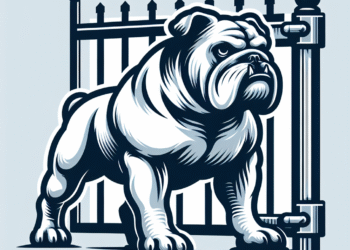Choosing the right dog food is crucial for your furry friend’s health and well-being. With countless options on the market, deciphering nutritional labels can feel overwhelming. This guide will help you understand how to read and interpret these labels to make informed decisions for your beloved pet.
Understanding Dog Food Labels
1. Ingredients List: The First Step
The ingredients list is the most transparent part of a dog food label. Ingredients are listed in descending order by weight, meaning the first few ingredients are the most significant.
Key Points to Look For:
- High-Quality Protein Sources: Look for named meat sources (“chicken,” “beef”) rather than generic terms like “meat meal.”
- Whole Grains and Vegetables: Ingredients like brown rice, barley, and sweet potatoes provide essential nutrients and energy.
- Avoid Fillers: Stay away from foods that list corn, wheat, or soy as primary ingredients, as they are often fillers and offer less nutritional value.
2. Guaranteed Analysis: Nutritional Breakdown
The guaranteed analysis provides key nutritional information, including:
- Crude Protein: Essential for growth, maintenance, and overall health. Look for at least 20% for adult dogs.
- Crude Fat: Provides energy and supports skin and coat health. A range of 8-20% is typically suitable.
- Crude Fiber: Important for digestive health. Look for a fiber content between 3-5%.
3. AAFCO Statement: Nutritional Adequacy
The Association of American Feed Control Officials (AAFCO) sets standards for pet foods. Look for a statement indicating the food is formulated to meet AAFCO standards for your dog’s life stage (puppy, adult, or senior). This ensures the food provides complete nutrition.
4. Life Stage and Size Considerations
Choose food specific to your dog’s life stage. Puppies, adults, and seniors have different nutritional needs.
- Puppy: High in protein and fat for growth.
- Adult: Balanced diet to maintain health.
- Senior: Lower fat and calories to prevent obesity.
Consider your dog’s size and breed as well. Large breeds may require different nutritional compositions compared to small breeds to avoid growth-related health issues.
Special Dietary Needs
1. Allergies and Sensitivities
If your dog has food allergies, consider limited-ingredient diets that contain fewer components. Common allergens include beef, dairy, and grains.
2. Health Conditions
Consult your veterinarian for specific diets if your dog has health issues such as obesity, diabetes, or kidney disease. Specialized diets can help manage these conditions effectively.
Evaluating Dog Food Brands
When choosing a brand, consider the following:
- Reputation: Opt for reputable companies with positive reviews.
- Recalls: Research any history of recalls to ensure safety.
- Transparency: Brands that provide detailed information about their ingredients and sourcing are generally more trustworthy.
Homemade and Raw Diets
Some pet owners choose homemade or raw diets for their dogs. While these can be healthy options, it’s crucial to ensure they are balanced and meet all nutritional needs. Consulting a veterinarian or a pet nutritionist is highly recommended before switching.
Conclusion
Reading and understanding nutritional labels is essential for selecting the best dog food for your furry friend. By focusing on high-quality ingredients, ensuring nutritional adequacy, and addressing specific dietary needs, you can foster your dog’s health and vitality. Remember, your dog’s health is a long-term commitment, and choosing the right food is the first step towards a happy, healthy life.















